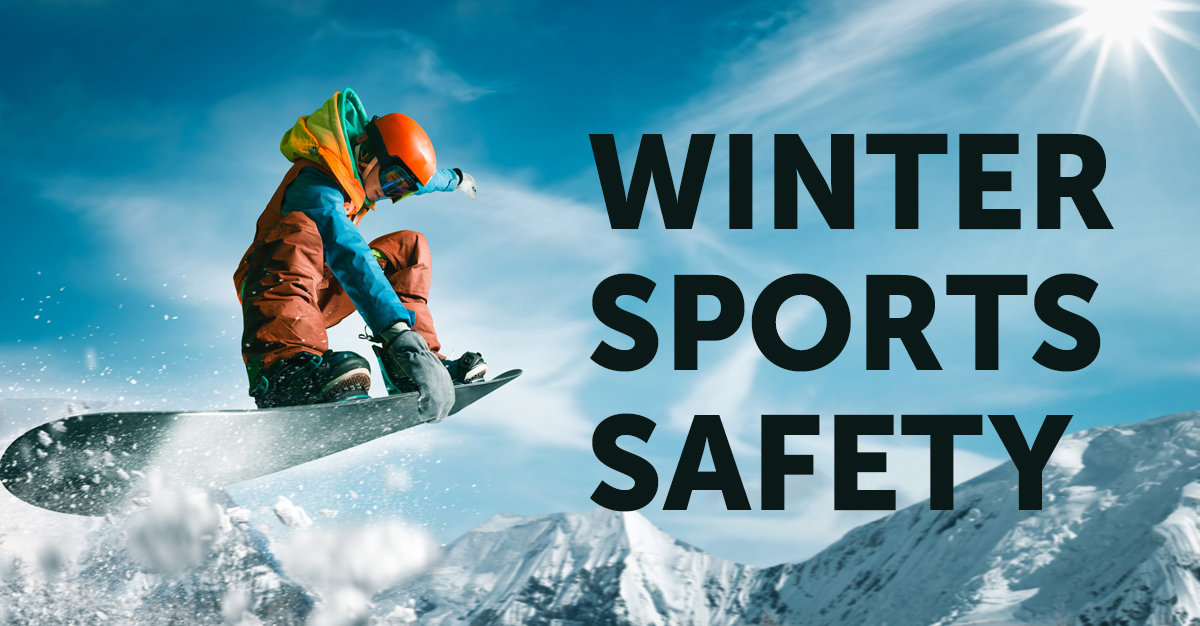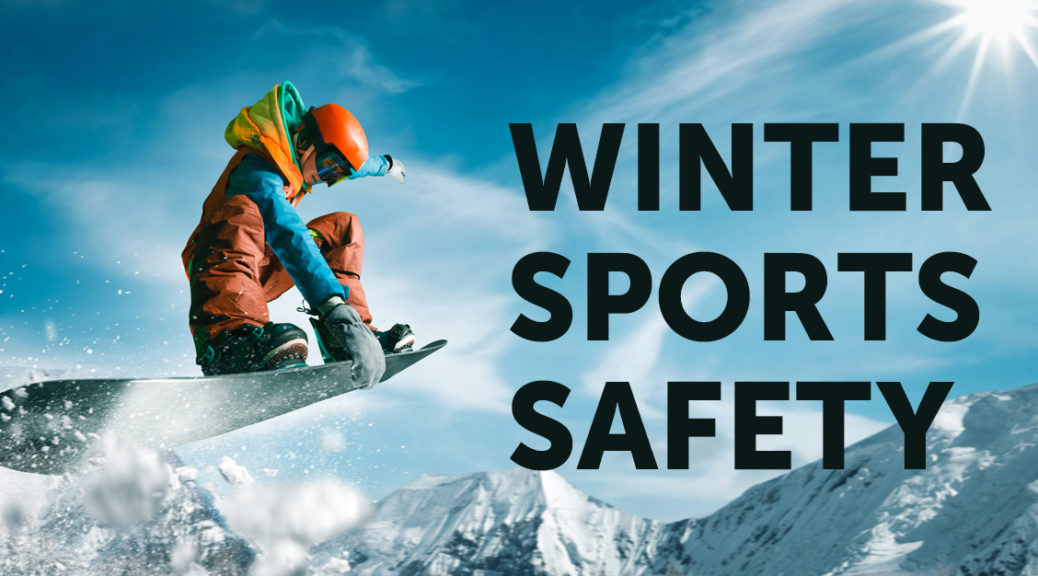
The first snowfall is exciting. It’s a signal to strap on the skis and skates, or even jump on a sled. Days spent playing in the frosty snow can be jam-packed with fun, but like any activity, you need to play safely. Winter activities can lead to the same bumps and bruises of every sport, but there’s the added concern of how to safely stay outside in cold temperatures. To help with that we have compiled a few winter snow safety strategies to help you avoid some of the most common winter sports injuries.
General Guidelines
No matter what your winter sport is, it is important to take a few minutes and make sure you know how to be safe.
Suggestions include:
- Don’t wait until the last minute. Start strength training the muscles you will need a month or so ahead of time. This will help you get into proper shape.
- Make sure you are in good physical condition for activities in the cold. If you are unsure, check with your doctor.
- Warm-up with light exercise for 5 minutes before you engage in any sport.
- Make sure your equipment and protective gear are in good condition and fit well.
- Always wear the appropriate protective gear for your sport.
- Dress properly for the cold. Protect yourself from frostbite and hypothermia.
- Wear several layers of tops and pants under warm jackets. Wear hats and water-resistant gloves. Face masks may be necessary for very cold weather.
- Protect your eyes from snow glare with shatter-proof sunglasses or goggles with UV protection.
- Take lessons to improve your ability. Better skills will allow you to adjust to changing conditions.
- Many organizations, like the National Ski Areas Association, recommend the use of helmets for downhill winter sports to prevent head injury.
Skiing and Snowboarding
Skiing and snowboarding have their own special equipment. The right equipment and the right fit are as important as knowing what you are doing. This will reduce your risk of injury.
Here are some other things you need to know:
- Take lessons from an expert. Evidence supports that beginners are hurt more frequently. The quicker you improve, the safer you will be on the slopes.
- Stick with your abilities. Do not attempt to ski a slope that is beyond your personal abilities. Ski-marked trails and observe trail signs. Rest when you get tired.
- Be sure that equipment is properly maintained and clean—no dirt or salt between boots, bindings, and the binding mechanism.
- Properly adjust bindings to reduce the chance of leg injuries. Test your ability to escape bindings by standing in the skis, then twisting to release the toe and heel pieces
- Wear the proper gear for snowboarding. This includes snowboarding pants, wrist guards, arm guards, and shin guards.
- When approaching the lift, be aware of pieces of clothing that could become entangled.
- Wear a helmet specifically designed for snow sports.
- Always ski or board with a buddy.
- Know and observe all the rules about crossing a trail, passing, and stopping.
- Wear sunscreen.
- Wear bright colors.
- If you are cross-country skiing for long distances, take snacks, water, extra clothes, and first aid supplies with you. Take a cell phone if you will be skiing in a remote area.
BOSU Balance, Endurance, and Strengthening Exercises to help you Stay Healthy on the Slopes
Exercises provided by North Lake Physical Therapy, located in Portland Oregon
Make sure you’re safe on the slopes by going to see your physical therapist. A Physical therapist can evaluate your injury, start a treatment plan, and most importantly, make sure you’re able to get back out enjoying your winter sports and activities.

